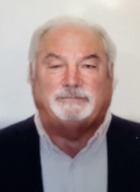Hyster Begins Pilot of Hydrogen Fuel Cell Powered Container Handler
Hyster Company is testing a top-pick container handler powered by hydrogen fuel cells (HFC) at Fenix Marine Services in the Port of Los Angeles.
Based on the standard Hyster H1050-1150XD-CH top-pick container handler design, the truck is powered by two 45kw hydrogen fuel cells from Nuvera, a wholly owned subsidiary of Hyster parent company Hyster-Yale Group. The HFC-powered top pick is designed to provide the zero emissions benefits of a battery electric option, with enough capacity to keep operators moving and avoid the need to stop in the middle of a shift to refuel or recharge.







